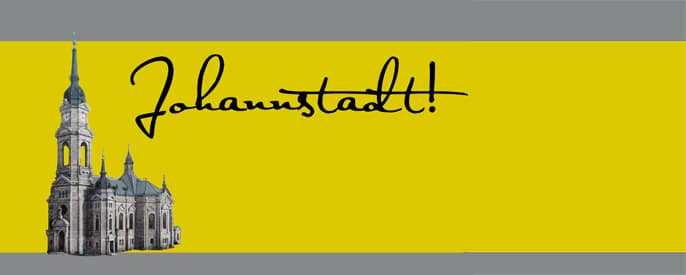This site is available in multiple languages: Deutsch, Русский, عربي.
Coming from Bönischplatz, walk down Bundschuhstraße toward the riverbank. Turn left on Florian-Geyer-Straße. At the passage to Elisenstraße you will reach location no. 9 of the historical walking tour.
Before 1945: Fields and field marshalls
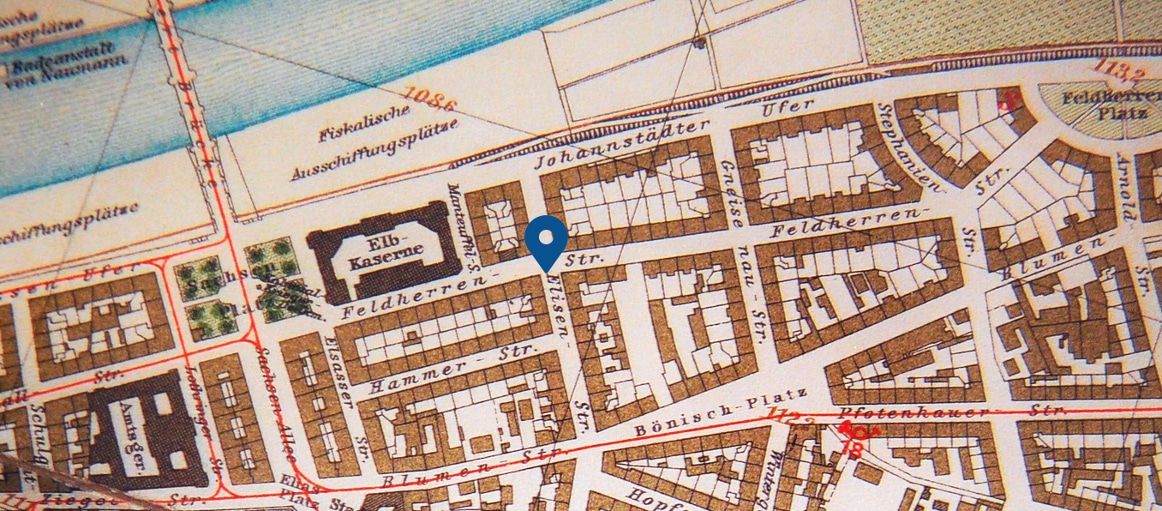
“Hopfgartens”, “Elisens Ruhe” and “Lüdickes Wintergarten”
Up through the 19th century, the area of what is now north Johannstadt was best characterized by gardens and agriculture. One of the largest estates in the area bore the name “Hopfgartens”. The space was acquired by Friedrich Waeber in the year 1819. Around 1830, he began calling his estate, “Elisens Ruhe” (“Elise’s Calm”). The grounds became the property of commercial horticulturalist, Lüdicke, who had created a verdant refuge with his three greenhouses (Palm, Acacia and Camelia House). In 1859, the newspaper “Die Gartenlaube” reviewed Lüdicke’s winter garden, noting: “From the royal family and the highest rungs of society down to the simple city-dweller, this newly-risen Eden of flowers made friends and admirers of all; and while on one hand, you delighted in the splendor and magnificence on display here, on the other hand, you were amazed that this blooming creation could be the work of one private individual, spending thousands to bring it to life.”. With the population in Johannstadt growing, the garden was torn down in 1890, to be built over with streets and new homes.
Find more information on the history of the garden estate here.
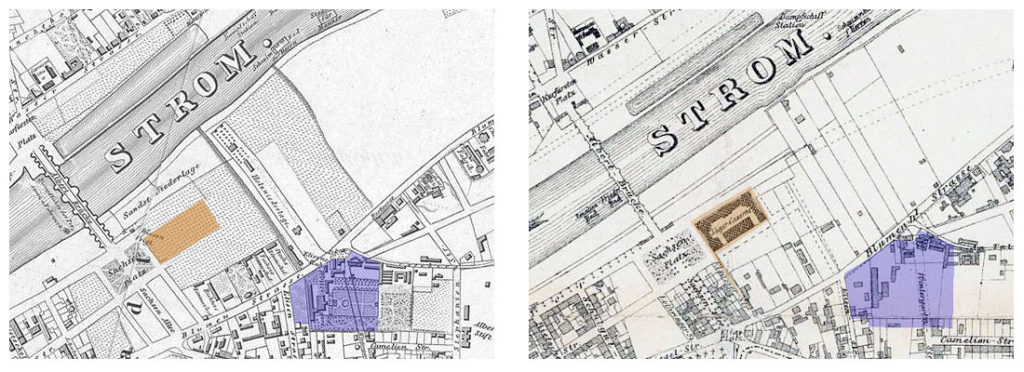
Right: City map from 1881. “Lüdickes Wintergarten” has disappeared (blue): in its place runs Wintergartenstraße. The ranger barracks (brown) now stand atop the field as the first large building in future north Johannstadt. Sources: SLUB Dresden / Deutsche Fotothek

Ranger barracks
At the beginning of the 1880s, the military building committee, under lieutenant colonel August Portius (1834–1912), built the ranger barracks. The three-winged building complex was decorated in line with the style of the time, with a multitude of battlements and small towers lending it the air of a lordly castle. A large parade ground in the inner courtyard was also part of the complex. The “2nd Royal Saxon Ranger Batallion No. 13” from Meißen was the first group to move in. From 1919 until their complete destruction on February 13-14, 1945, the barracks were used to house police. Until 2019, the space remained undeveloped and was used as a parking lot.
Find more information about the ranger barracks here.
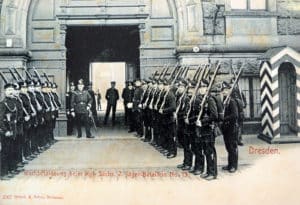
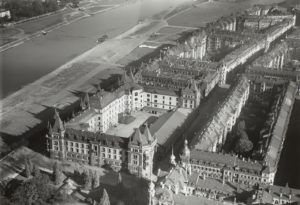
The rise of a residential area
The route along today’s Florian-Geyer-Straße goes back to the year 1893. At that time the street was called Feldherrenstraße, in the style of Marschallstraße, located on the other side of Sachsenplatz. After the ranger barrack was built, the first homes sprang up all around it, which, due to the flood risk, were equipped with raised cellars. Around 1920, a slew of locally-famous personalities lived here, including opera singer Otto Kallenbach, city councillor Alfred Reichardt, music director Richard Berger, architect Rudolf Patitz, the writer Heinrich Zerkaulen, as well as the actress Marion Regler. In addition, important institutions such as the “Sugar Distribution Point of the Kingdom of Saxony” and the “Dresden Center for Bakery Needs” made their home on the street. On the corner of bordering Gneisenaustraße (today Bundschuhstraße), one could find a typical pub for the area: the “Gneisenauer Hof”.
After 1945: Schematics, slabs and skyscrapers
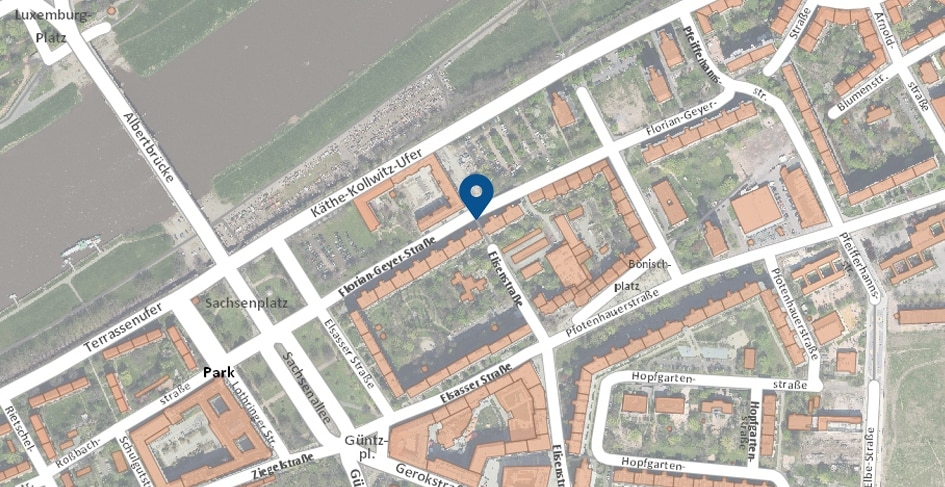
Feldherrenstraße becomes Florian-Geyer-Straße
After 1945, all streets which were once named after generals were re-christened, often with names relating to the Peasants’ Revolt. Thus, Feldherrenstraße received the new name Florian-Geyer-Straße. Geyer (ca. 1490 – 1525) was a Frankish knight of the realm and, in 1525, chief negotiator for the Odenwälder peasant army. The adjacent Gneisenaustraße has since been called Bandschuhstraße. Manteuffelstraße, which ran along the eastern side of the destroyed ranger barrack, was incorporated into the “new” street.
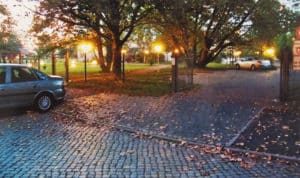
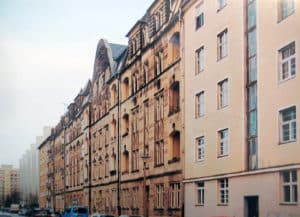
Reconstruction and city-planning
Only a few homes in the area around this panel’s location were spared destruction by the bombs of World War II. In 1974, after intensive, large-scale planning for the reconstruction of north Johannstadt using pre-fabricated homes, the first “IW 67” type units (“Industrial Living”) were built as part of the housing block at Florian-Geyer-Straße 2–18. From then until 1978, residences of the same type were also built on this street, at numbers 28-38; and on Käthe-Kollwitz-Ufer and Florian-Geyer-Straße, three “WHH 15” type (“Residential Tower”) 15-story high-rises were erected.
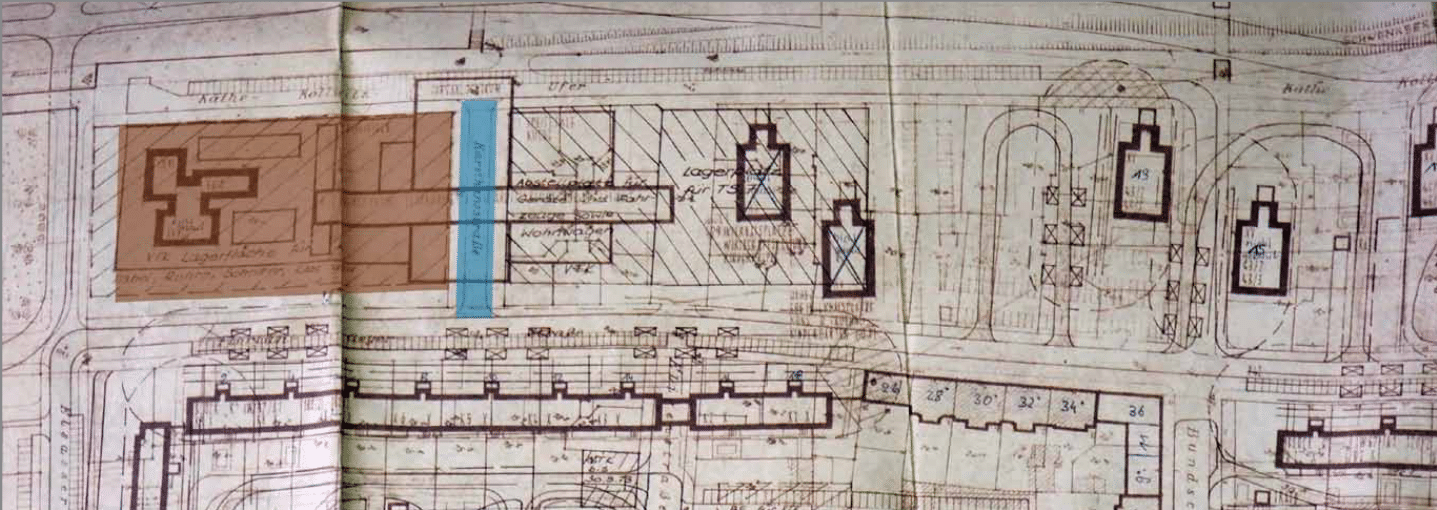
Community living
A resident of Florian-Geyer-Straße recounts: “Forty families lived in one high-rise. […] At that time, renters elected resident community leadership, who were responsible for organizing community life on behalf of the building association. There were work assignments on the exterior grounds, care for existing facilities and plant beds. Community highlights included house parties and other similar events with residents. […] the resident community was awarded the title “Exemplary Building Community” by the Fortschritt building association and the district board of the GDR National Front.”
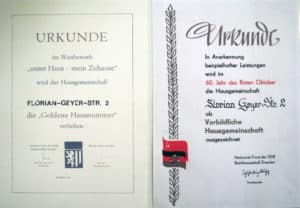
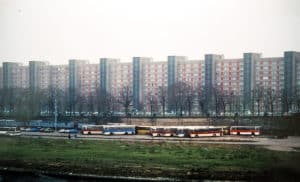
Commerce and change
With the creation of the flea market on the Johannstädter Elbufer in the 1990s, this space on the Elbe–which in the 19th century had among other things been used to store sandstone, and which, starting in 1970, served as a parking lot–could be reclaimed for cultural and commercial use. Today, Dresden’s oldest flea market attracts a multitude of visitors.
In the 1970s, Florian-Geyer-Straße 48 played home to a workers’ residence for African guest workers. In 1993, it became a hostel for Russian returnees from former German settlements. Later it turned into a hostel for asylum seekers until 2016. Many people who arrived here ended up staying in the neighborhood after receiving resident status. This is the reason why the area between Florian-Geyer-Straße and Gerokstraße is still today one of the most culturally diverse neighborhoods in Dresden.
Text: Matthias Erfurth, Matthias Kunert, Henning Seidler
Editorial deadline: January 2024
